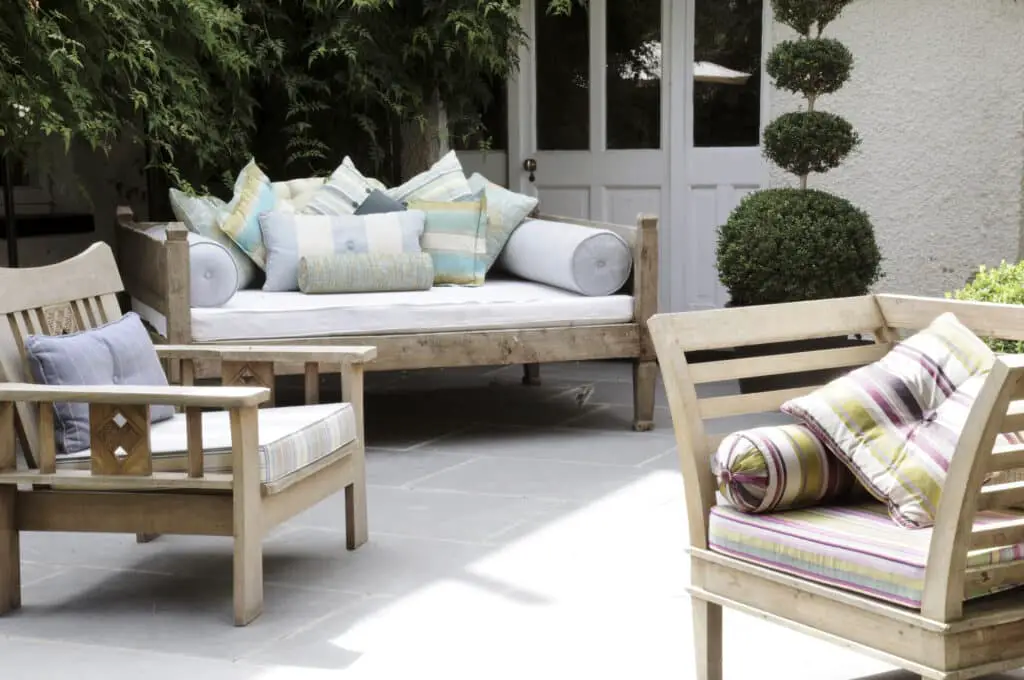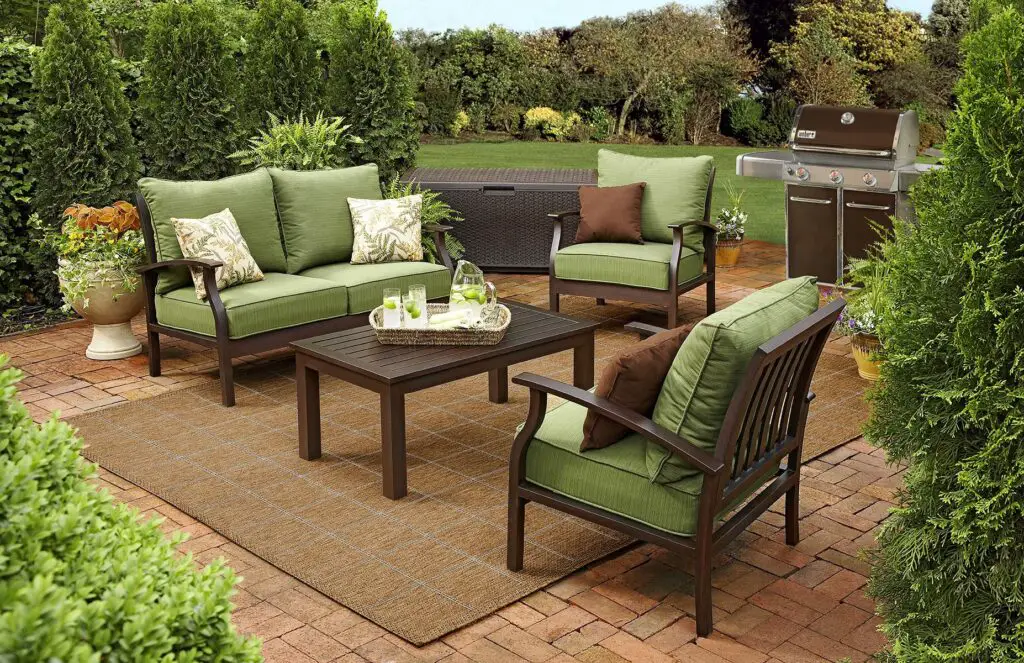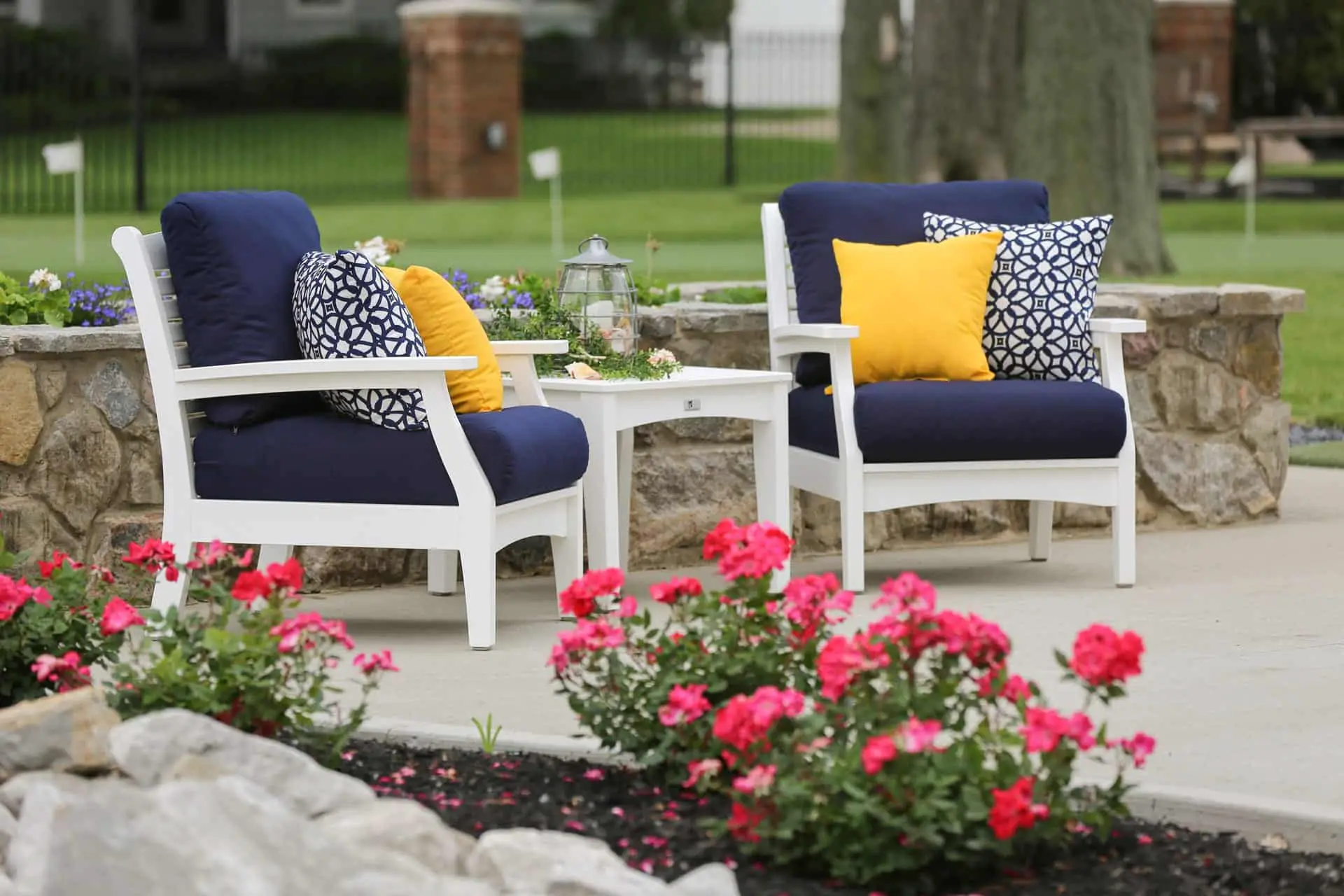How To Keep Patio Cushions From Blowing Away
Introduction
How To Keep Patio Cushions From Blowing Away: A sudden gust of wind can turn a peaceful day on your patio into a game of chase as your cushions go soaring through the air. Not only is this a nuisance, but it can also lead to potential damage or loss of your cushions. To begin, we’ll explore some simple and budget-friendly solutions. From basic fastening techniques using everyday household items to creative approaches that add a touch of charm to your outdoor space, you’ll discover how ingenuity can go a long way in securing those cushions.
If you prefer a more hands-off approach, there are plenty of practical products designed explicitly for keeping your patio cushions in place. We’ll explore various options, such as cushion ties, straps, and clips, engineered to withstand the wind’s force and maintain your outdoor comfort. There’s nothing quite like enjoying your patio chairs with its inviting furniture and soft cushions, providing the perfect oasis to unwind and soak up the sun.
From simple solutions to practical products designed to combat the wind, you’ll discover a range of methods to keep those cushions from blowing away and turn your outdoor space into a stress-free zone. However, if you’ve ever experienced the frustration of watching your patio cushions take flight during a gusty day, you know how essential it is to keep them securely in place.

How do you keep patio cushions in place?
Keep patio furniture cushions in place and prevent them from blowing away in stormy weather. Simply attach them to your furniture with Scotch™ Extreme Fasteners. For furniture indoors, use Scotch™ Indoor Fasteners so chair cushions won’t slip when friends, family or little tykes sit down.
Utilising items like Velcro strips, bungee cords, or homemade ties can be surprisingly effective in securing your cushions to the furniture. These creative solutions not only keep the cushions in place but also add a personal touch to your outdoor decor.
Investing in purpose-built products specifically designed to keep cushions from blowing away provides a hassle-free and reliable solution. Cushion ties, clips, and straps made from durable materials are built to withstand various weather conditions, ensuring long-lasting protection for your cushions.
Proper storage and maintenance are also crucial factors. When not in use, store your patio cushions in a secure container or indoors to shield them from the elements. Regularly inspect and adjust your fastening methods to maintain their effectiveness and prolong their lifespan.
Remember to consider the overall layout of your patio and strategically position your furniture to minimize the impact of wind. Windbreaks created by plants, trellises, or fences can offer protection, making your seating area more resistant to gusts.
Ultimately, finding the right combination of strategies that align with your patio’s aesthetics and your personal preferences will lead to a more enjoyable outdoor experience.
With a willingness to adapt and experiment, you can create a harmonious and relaxing outdoor space where your cushions stay firmly in place, allowing you to fully embrace the joys of outdoor living. So, make the most of your patio, invite your loved ones, and let the worry of cushions blowing away become a thing of the past.
What can I use for cushion ties?
Cushion ties: Tools and materials
You can use whatever cord, ribbon or fabric you think will look good and be strong enough to hold your cushions in place.
Velcro Strips: Velcro strips are an excellent choice for cushion ties due to their ease of use and effectiveness. One side of the Velcro can be attached to the cushion, while the other adheres to the furniture, providing a secure connection that is easy to fasten and unfasten as needed.
Bungee Cords: Bungee cords are elastic and can stretch to fit various cushion sizes. They offer a strong grip and can be looped around the furniture frame or tied to anchor points, keeping your cushions firmly in place even during windy conditions.
Rope or Twine: Simple and readily available, thick ropes or twine can be used as cushion ties. Simply loop the rope around the cushion and tie it securely to the furniture. You can opt for natural jute twine for a rustic look or colorful nylon rope for a more vibrant appearance.
Fabric Strips: Leftover fabric scraps or old belts can be repurposed into cushion ties. Cut the fabric into strips, and then tie or sew them onto the cushions and furniture frames. This DIY approach allows you to match the ties’ color and style to your outdoor decor.
Zip Ties: Zip ties are another convenient option for cushion ties. They are easy to use, durable, and provide a strong hold. However, keep in mind that they are single-use ties and may need to be replaced over time.
How do I stop my sofa cushions from sliding?
Methods to Keep Your Cushion Stationary
Attaching Velcro strips under the sliding cushions is one of the simplest ways to solve this annoying problem of couch cushions. You need to ensure that the tape you choose should be heavy-duty and sturdy enough to increase the durability and functionality of this method.
One of the easiest and most effective solutions is to use gripper pads or non-slip mats. These adhesive pads can be placed under the cushions to provide traction between the cushion and the sofa frame. They create friction that helps to keep the cushions in place, reducing sliding significantly.
Velcro strips can be attached to both the bottom of the cushions and the sofa frame. The hook and loop closure creates a strong bond, preventing the cushions from slipping and maintaining their position.
Cut pieces of rubber shelf liner to fit the size of your cushions and place them between the cushions and the sofa frame. The rubber’s grip will help anchor the cushions and prevent them from shifting.
Double-sided tape can be applied to the sofa frame, and then the cushions pressed firmly onto it. This creates a temporary bond that keeps the cushions from moving while still allowing for easy removal and adjustment.
Cushion stay products are specially designed to keep sofa cushions in place. These devices feature brackets or clips that attach to the sofa and hold the cushions securely in position. Furniture Fix is another product that can be placed under sagging cushions to provide support and stability.
Should patio cushions be left outside?
Can Patio Cushions Be Left Outside? It may be safe to leave patio cushions outside in certain conditions, such as mild weather, and for short periods of time. However, many types of weather can cause damage to your cushions, including daily sunlight and morning dew.
Convenience: Leaving patio cushions outside means they are readily available whenever you want to use your outdoor space. You don’t have to go through the hassle of bringing them in and out every time you want to enjoy your patio.
Resistance to Mildew and Mold: Many modern outdoor cushions are designed to resist moisture, mildew, and mold. If you have high-quality, weather-resistant cushions, they can withstand exposure to light rain and humidity.
UV Resistance: Some outdoor cushions include UV-resistant coatings to prevent fabric fading from sunshine.
Fading and Sun Damage: Even with UV-resistant treatments, direct sunshine can fade and weaken fabric. Colors may fade and fabric may degrade.
Moisture Retention: Weather-resistant cushions can repel water, but prolonged rain or dampness can cause mildew and mold growth.
Prolonged Wear and Tear: Wind, rain, dirt, and debris can damage cushions left outside, shortening their lifespan.

Can you leave outdoor cushions outside all the time?
Cushions for outside are made to last in bad weather. Mold and mildew can still grow on them, though, if they are left outside or kept in a damp place. Pick a place that is dry and has stable temperature and humidity.
The outdoor pillows will always be ready to use whenever you want to enjoy your outdoor space if you leave them outside. You don’t have to keep bringing them in and out, which saves time and effort.
Sunbrella and other weather-resistant materials are often used to make outdoor seats. These materials can stand up to sun, rain, and mildew. Outdoor chairs made of good materials can last through bad weather.
Cushions on outdoor furniture make your backyard a nice spot to hang out with friends and family.
Even fabrics that are meant to be weatherproof can fade and wear down after being in full sunlight for a long time. The shine and colors of the fabric may fade.
Cushions don’t grow mildew, but being in the rain or a damp place for a long time can make them retain water and mold grow.
Longer Wear and Tear: Wind, rain, dirt, and other outdoor factors can shorten the life of cushions.
Are patio furniture covers necessary?
If you live in a hostile environment, cover your outdoor furniture. Protecting your outdoor sofa and chair set, dining table, and patio accessories from harsh weather can extend their lifespan and reduce the need for deep cleanings.
Protecting patio furniture from the elements is one of its main benefits. Time, rain, snow, UV rays, dust, and debris can damage and wear. Patio furniture covers protect the furniture from water and other environmental conditions that can cause rust, fading, and damage.
Outdoor furniture can fade or discolor from sunlight and weather. Patio furniture coverings deflect UV rays, preserving its beauty and color.
Patio furniture can deteriorate from regular usage and outside exposure. Covers protect furniture from wind, rain, and other elements, extending its lifespan and decreasing the need for replacement.
In humid or damp locations, outdoor furniture can grow mold and mildew due to moisture retention. Breathable, water-resistant patio furniture covers prevent mold and mildew growth.
Using patio furniture covers can significantly reduce the maintenance required to keep your outdoor furniture in good condition. Covers keep dirt, leaves, and other debris off the furniture’s surface, making cleaning and upkeep much easier.
Why do cushions wobble?
A wobble cushion can come in a wedge shape (move ‘n’ sit) and a round shape (disco sit). Benefits include; improved balance, core stability and muscle strengthening. It can also help with focus and attention as it provides sensory input which increases body awareness.
One of the most common reasons for cushion wobbling is an uneven furniture base. If the legs or feet of the furniture are not level or stable, it can cause the entire piece to wobble, including the cushions. This is particularly common in older or poorly constructed furniture.
Check the furniture’s base for any loose or uneven legs. Tighten screws and bolts to ensure stability. If the furniture has adjustable feet, adjust them to even out the seating surface. In some cases, placing shims or furniture levelers under the legs can help achieve a stable and level base.
Loose or defective cushion inserts can lead to uneven support, causing the cushions to wobble. Over time, the filling inside the cushions may shift or compress, leading to an uneven surface.
The cushion covers themselves can also contribute to wobbling. If the covers are old, stretched, or unevenly sewn, they may not fit the cushions properly, causing them to wobble.
Inspect the cushion covers for any signs of wear or poor stitching. If the covers are removable and washable, try washing and reshaping them to see if it helps. If the covers are beyond repair, consider replacing them with new ones that fit snugly over the cushions.
What to do with patio cushions when it rains?
Use water resistant storage bags
A quick and efficient solution is to store your cushions and covers in a water-resistant storage bag. They are usually very large, zippered, and come in oversized sizes, able to fit various cushion seats, large patio cushions, throw pillows, and basically anything else you want.
If bringing the cushions indoors is not possible, invest in high-quality patio furniture covers that are specifically designed to protect cushions from rain and other elements. Ensure the covers are water-resistant and adequately sized to fit your cushions snugly.
Before placing the patio furniture covers over the cushions, make sure they are clean and dry. Stack the cushions neatly, and then cover them securely with the protective covers. Fasten the covers with ties or straps to prevent them from blowing off during windy conditions.
If you have a deck box, storage bin, or weatherproof container, you can place the cushions inside before the rain arrives. Ensure the container is properly sealed to keep out moisture and pests.
If your patio furniture has the option, elevate the cushions off the ground to prevent water from pooling and seeping into the fabric. Use furniture risers or blocks to lift the furniture slightly above the ground.
If your furniture is too large to move indoors, tilt it or cover it with a waterproof tarp to prevent water from accumulating on the seats and soaking the cushions. Be sure to secure the tarp tightly to prevent water from seeping through.

Conclusion
Velcro strips, bungee ropes, or even boulders can hold pillows in place. Create personalized ties or straps to secure cushions and personalize your patio furniture. Your outdoor patio can become a relaxing retreat where you can entertain and make memories without runaway cushions.
Alternatively, investing in purpose-built products designed to withstand the wind’s force can be a hassle-free solution. Cushion ties, clips, and straps specifically made for this purpose offer a reliable way to keep your outdoor cushions firmly attached to your furniture. These products are usually made from durable materials that can endure various weather conditions, providing long-lasting protection for your cushions.
Remember, proper storage is also crucial for preserving your patio cushions. When not in use, keep them in a secure storage container or inside your home to shield them from harsh elements and reduce the risk of damage. By combining these practical strategies, you can enjoy your patio to the fullest, knowing that your cushions are secure and won’t fly away during windy days. With a little bit of preparation and attention to detail.








